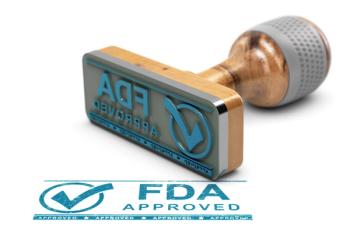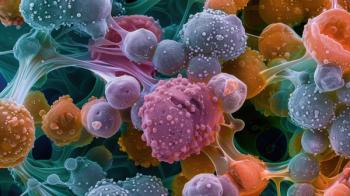
Cholesterol-Lowering Drugs May Significantly Increase Risk of Diabetic Microvascular Complications
Key Takeaways
- Cholesterol-lowering drugs, particularly HMGCR inhibitors, may increase microvascular complication risks in diabetic patients, impacting morbidity and quality of life.
- NPC1L1 inhibitors potentially reduce microvascular complication risks, suggesting a differential effect among cholesterol-lowering therapies.
HMGCR inhibitors were found to significantly increase the risk of experiencing microvascular complications in patients with diabetes, whereas NPC1L1 inhibitors were found to reduce the risk.
Cholesterol-lowering drugs, including 3-hydroxy-3-methylglutaryl-CoA reductase (HMGCR) inhibitors and proprotein convertase subtilisin/kexin type 9 (PCSK9) inhibitors, may significantly increase the risk of microvascular complications in patients with diabetes, according to research published by investigators in the Journal of Diabetes Research.1
Diabetic Microvascular Complications and Possible Association With Cholesterol
Microvascular complications in diabetes are a serious risk that is associated with excess morbidity and mortality in patients affected. Epidemiological studies suggest that up to one-third of patients with diabetes suffer from microvascular complications, which can include retinopathy, nephropathy, and neuropathy, with diabetic retinopathy being the most common.2,3
These complications can cause a massive burden to patients and severely damage their quality of life. Because of the growing prevalence of diabetes worldwide—the International Diabetes Federation predicts that the number of patients with diabetes worldwide will reach 700 million by 2045—it is critical to elucidate the risk factors of developing such complications and develop novel treatment and management strategies.3,4
Dyslipidemia is often observed in patients with diabetes, and prior literature suggests that the condition could be a risk factor for developing diabetic microvascular complications. For many, statins are prescribed as a first-line drug for lowering cholesterol and, accordingly, reducing the incidence of cardiovascular events in patients with diabetes. By blocking the HMGCR enzyme, cholesterol synthesis is reduced in the liver, especially low-density lipoprotein cholesterol (LDL-C).5
Despite their purported benefits, investigators are uncertain as to whether these drugs have a causal association with diabetic microvascular complications. Specifically, the effects of statins in patients with diabetes have not been compared with diabetic patients who do not use statins to lower their lipid levels. PCSK9 inhibitors, which work to prevent the degradation of the low-density lipoprotein receptor, and Niemann-Pick C1-Like 1 (NPC1L1) inhibitors, which act as cholesterol absorption inhibitors, differ from statins in more thoroughly lowering LDL-C levels and reducing cardiovascular risk. For these, too, contradictory results necessitate new research into the effects of cholesterol-lowering drugs on diabetic microvascular complications, according to the investigators.1
Therefore, the current authors conducted a Mendelian randomization (MR) analysis based on observational data to explore the causal relationships between cholesterol-lowering drug targets—HMCGCR, PCSK9, and NPC1L1—and the risk of developing diabetic microvascular complications. They aimed to dig deeper into the mechanisms behind the development and progression of these often-burdensome diseases—specifically, diabetic nephropathy, diabetic retinopathy, and diabetic neuropathy.1
HMGCR Inhibitors Increase Microvascular Risk, Whereas NPC1L1 Inhibition Reduces It
A positive control analysis assessed the association between cholesterol-lowering drug targets and coronary atherosclerosis, with coronary heart disease (CHD) used as the positive control. They found that statins (OR, 0.73; 95% CI, 0.67-0.80; P = 3.98 × 10-11), PCSK9 inhibitors (OR, 0.65; 95% CI, 0.57-0.73; P = 6.44 × 10-12), and NPC1L1 inhibitors (OR, 0.58; 95% CI, 0.43-0.78; P = .0003) all significantly reduced the risk of CHD, confirming the expected benefits of cholesterol-lowering therapies on cardiovascular outcomes. This analysis was conducted to affirm confidence in the causal inferences drawn for diabetic microvascular complications, according to the authors.1
In the primary analysis, there were meaningful differences in the effects of cholesterol-lowering targets across outcomes. Regarding diabetic nephropathy, HMGCR inhibition was associated with an increased risk (OR, 1.88; 95% CI, 1.50-2.36; P = 5.55 × 10-8), while PCSK9 inhibition indicated a moderate increase in risk (OR, 1.30; 95% CI, 1.07-1.58; P = .009). Notably, NPC1L1 inhibition did not exhibit a statistically significant effect (P = .574).1
Moving to diabetic retinopathy, HMGCR inhibition demonstrated the strongest association with higher risk, whereas PCSK9 inhibition had no significant effect, and NPC1L1 inhibition was associated with a reduced risk. Furthermore, for diabetic neuropathy, HMGCR inhibition had the strongest association, demonstrating a substantial increase in risk. Additionally, PCSK9 inhibition was moderately associated with increased risk, whereas NPC1L1 inhibition demonstrated no statistically significant effect.1
Overall, the findings showcase the differential effects of cholesterol-lowering targets on microvascular complications and suggest that pharmacists and health care providers implement potentially helpful considerations for novel therapeutic strategies to combat these complications. HMGCR inhibitors were strongly associated with increased risk of the studied microvascular complications, while NPC1L1 inhibitors were found to significantly reduce the risk. For patients who are at risk of these complications, these insights can help plan treatment strategies that take into consideration both their dyslipidemia and diabetes.1
REFERENCES
1. Yang B, Yao B, Zou Q, et al. Causal association between cholesterol-lowering drugs and diabetic microvascular complications: A drug-target Mendelian randomization study. J Diabetes Research. 2025;1:3661739. doi:10.1155/jdr/3661739
2. Lyssenko V, Vaag A. Genetics of diabetes-associated microvascular complications. Diabetologia. 2023;66(9):1601-1613. doi:10.1007/s00125-023-05964-x
3. Retinopathy, neuropathy and nephropathy in non-insulin-dependent diabetic patients. J Formos Med Assoc. 1991;90(10):936-940. PMID: 1685173. Accessed Online June 24, 2025. https://pubmed.ncbi.nlm.nih.gov/1685173/
4. Cho NH, Shaw JE, Karuranga S, et al. IDF Diabetes Atlas: global estimates of diabetes prevalence for 2017 and projections for 2045. Diabetes Research Clin Pract. 2018;138:271-281. doi:10.1016/j.diabres.2018.02.023
5. Romero-Aroca P, Verges R, Pascual-Fontanilles J, et al. Effect of lipids on diabetic retinopathy in a large cohort of diabetic patients after 10 years of follow-up. JCM. 2023;12(20):6674. doi:10.3390/jcm12206674
Newsletter
Stay informed on drug updates, treatment guidelines, and pharmacy practice trends—subscribe to Pharmacy Times for weekly clinical insights.




















































































































































































































